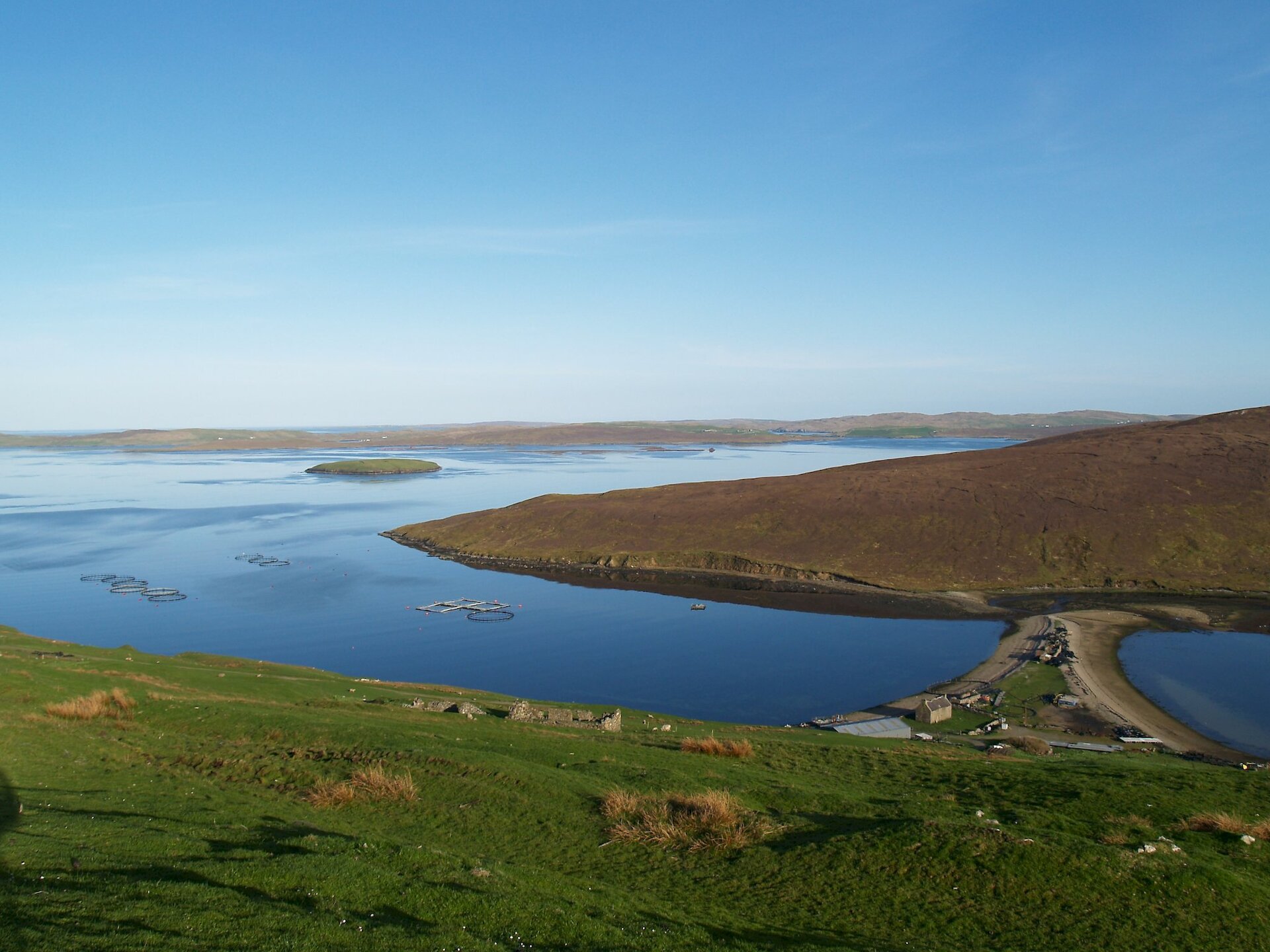This route connects the north east of the Mainland with Yell to the north, a journey split by the ferry jouney across Yell Sound from Toft to Ulsta.
After the 1 mile (1.5km) of single-track from Vidlin there is a straight and fairly level run of 4 miles (6.5km) of wide road past Laxo and the Whalsay ferry terminal. The A970 leading west to Brae is joined at the Loch of Voe. This road connects Brae and Sullom Voe Oil terminal with Lerwick so can often be busy with oil industry traffic, especially in the early morning or late afternoon when shifts change. The activity of the oil industry, which has contributed to the shaping of modern Shetland, is well hidden so the district still has many unspoiled and beautiful places. The scene from the main road view point looking down on Lower Voe is one of Shetland’s ‘classic’ views and the interpretation panel tells local history and the village connection with Mount Everest.
Just beyond the view point route 1 of the National Cycle Network splits again with both east and west routes around the north of Mainland. Our route takes the A968 to the north-east to the head of Dales Voe. The long 4 mile (6.5km) climb up the north-west shore of the old glacial valley of Dales Voe affords terrific views across to the steep sided Gardaness Hill on the other side. On reaching the top of hill at Swinister stop and take in the magnificent views across small islands to Lunna Ness and beyond. Just below you can marvel at the triple tombolos with their lagoons that join Fora Ness to Mainland.

